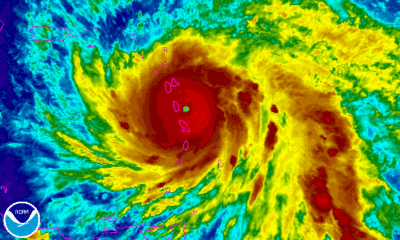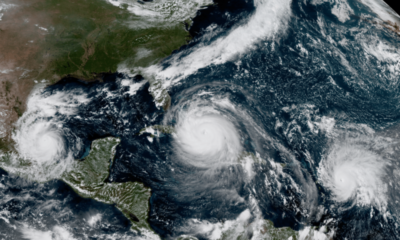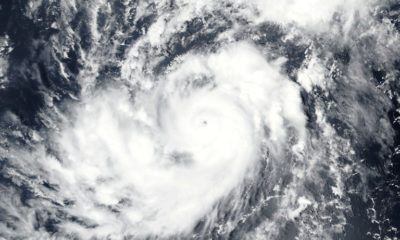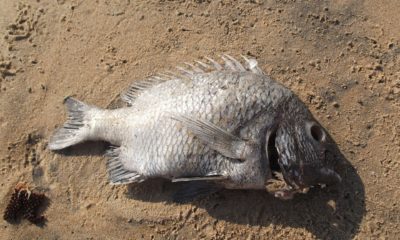The Florida panther, a subspecies of the cougar family, scientifically known as Puma concolor coryi, is considered a unique subspecies that is only found in the state of Florida in the United States. The Puma concolor subspecies is known by different names, including panther, catamount, painter, mountain lion, cougar and puma.
In the 1500s the estimated population of the extremely shy, nocturnal and solitary animal was around 1,360. With the rapid loss of its natural habitat, hunting and overcrowding the population decreased dramatically to 20. Today, the only known breeding population in South Florida estimates the number to have increased to about 100 to 160. The Florida panther is one of the world’s most endangered mammal.
In the early days, the panthers freely roamed the southeastern part of the U.S. and they were found in Florida, Alabama, Mississippi, Arkansas, Georgia and Louisiana as well as in some parts of South Carolina and Tennessee. Today, the animals are confined in a small section of the southern corner of Florida, in the counties of Monroe, Dade, Hendry, Collier and Lee. Some of these are private lands scheduled for development.
Specifically, these areas include Corkscrew Regional Ecosystem Watershed (CREW) land trust tracts, lands planted with vegetables and citrus trees, cattle ranches, Corkscrew Swamp Sanctuary, Everglades National Park, Fakahatchee Strand Preserve State Park, Picayune Strand State Forest, Okaloacoochee Slough, Dinner Island Ranch Wildlife Management Area, Florida Panther National Wildlife Refuge, Spirit of the Wild Wildlife Management Area, Big Cypress National Preserve, and State Forest.
Description
This beautiful cat has a tawny brown coat on its back, with pale gray or almost white fur underneath. The coat on the tail and ears has black tips. The male averages between 45 to 70 kilograms while the female could be about 30 to 45 kilograms. They have an average shoulder height of about 24 inches to 28 inches. The Florida panther could grow up to a length of 5.9 to 7.2 feet or about 1.8 to 2.2 meters.
Panther cubs are born with spotted coat for camouflage and their eyes are blue. Spots fade as they grow older and their eyes typically turn golden yellow. Their offsprings stay with the mother for two years. One of their more distinguishing characteristics is the animal’s inability to roar. However, it can make several noises, including purrs, hisses, growls, whistles and chirps.
Their favorite foods are white tailed deer, feral hogs, armadillo, fowls, small alligators, small rodents and raccoons.
Conservation Efforts
Florida Governor Rick Scott declared on March 6, 2013 that March 16 was “Save the Florida Panther Day” to promote the rare animal’s conservation as well as the diverse natural resources of Florida.
Several projects have already been established to promote the conservation of the Florida panther. Its population was seriously weakened and lowered also as a result of inbreeding.
Inbreeding, due to the animal’s small number had resulted in several abnormalities in the offspring, which included cowlick fur on its back, kinked tail and cryptorchism in males. Inbreeding also caused holes in the heart (atrial septal defects), reduced fertility and a slowdown in growth rates.
To save the Florida panther from total extinction, eight female Texas cougars were introduced in 1995. There is not much difference between the two except for their habitats and these two species have a history of mating during the 19th century. The result of the introduction of these female cougars is the increase in population. Although slightly different, the offspring are all Florida panthers genetically.
The Florida government also reconstructed and preserved some of the animal’s natural habitat, allocating more lands for the territorial animals. The Everglades National Park reserved 1,508,508 acres for the Florida panther, while the Florida Panther National Wildlife Refuge reserved 23,379 acres and the Big Cypress National Preserve worked in reconstructing and preserving 720,566 acres.
The panthers always face the danger of getting killed by vehicles when they cross the roads at night. One or two panthers become victims of road accidents annually. To prevent such events from happening and further contribute to the dwindling panther population, Florida gave the rare animals safe corridors by constructing underpasses. Twenty-three underpasses were constructed in 1986 along I-75 and since 1987 no more panthers have been killed on the highway. Today there are 36 underpasses that have been built, which cost the state nearly $13 million.
Large open fields and unforested areas are not conducive to panther crossing between habitats so the government imposed the creation of corridors, a forested passageway across open fields and plantation areas.
They also started captive breeding programs in 1991 starting with six kittens they have taken from the wild.
One of two orphan cubs rescued in the wild after their mother was killed was released back into its natural habitat. On January 31, 2013 the female panther was released into Collier County’s Picayune Strand Forest. Her brother is also scheduled to be released into another area. They were cared for at the White Oak Conservation Center in 2011.
Importance of saving the Florida panther
All the conservation efforts directed at saving the elusive Florida panther benefit a number of other different species as well. The panther becomes an umbrella species. With its large home range requirement, its protection also protects the flora and fauna found in its habitat. In the same woods were the panthers roam, the coyotes, wild hogs, white tailed deer, bobcats and black bear also roam. Several varieties of amphibians, reptiles and birds also became protected because of the protection of their habitat. So many of Florida’s tropical plants, some of which are extremely rare, endangered and threatened in the Florida southwest, thrive in their natural habitat because of this protection. Likewise, the groundwater to which the Florida population and the environment needs is recharged due mainly to the protection of the panthers’ natural habitat.
Therefore, the symbiotic relationship among different species is enhanced by the protection given to Florida panther, since protecting its habitat protects the environmental health and heritage of Florida, and ensures that a wildlife legacy will be enjoyed by future generations.















Facebook
Twitter
Pinterest
Google+
LinkedIn
Email